Tufts DPT Movement Science Exam 1 Biomechanics (Weeks 1-3)
1/89
There's no tags or description
Looks like no tags are added yet.
Name | Mastery | Learn | Test | Matching | Spaced |
|---|
No study sessions yet.
90 Terms
Kinesiology
study of human movement
Biomechanics
the application of physics principles to biological systems
Kinematics
branch of mechanics that describes the motion of a body without regard to the forces or torques which produce this motion
*movement*
Kinetics
branch of mechanics that describes the effect of forces on the body
*force*
Axis of rotation of a joint
varies based on the position of the joint
Rectilinear translation
when all points on a body move in a straight line, the same distance, and with no change in direction
Curvilinear translation
occurs when all points on a body move the same distance but the paths followed by the points on the object are curved
Osteokinemetics
Rotational movement of one bone on another
-measured w goniometer
Arthrokinematics
Gliding motions of the joint surfaces that may accompanythe joint rotations to allow for normal joint motion
-measured w joint play or arthrometers
open chain
distal segment is free to move
closed chain
distal segment is fixed
Convex on concave
roll and slide in opposite directions
Concave on convex
roll and slide in same direction
Closed pack position
-joint position wherethere is maximal congruency of the joint surfaces
-Joint position which places maximal tension on the joint capsule and ligaments
Open pack position
-any position which is not closed pack
-Joint position which has minimal joint congruency of the joint surfaces
-accessory movements allowed
Strain
measure of the amount of deformation of an object
Stress
internal force generated as a tissue resists deformation, divided by its cross-sectional area
Types:
-compression
-tension
-shear
Bone vs stress
good at compression
bad with shear
Zone A
A: the toe region. Slight stretch produces minimaltension in a nonlinear relationship.
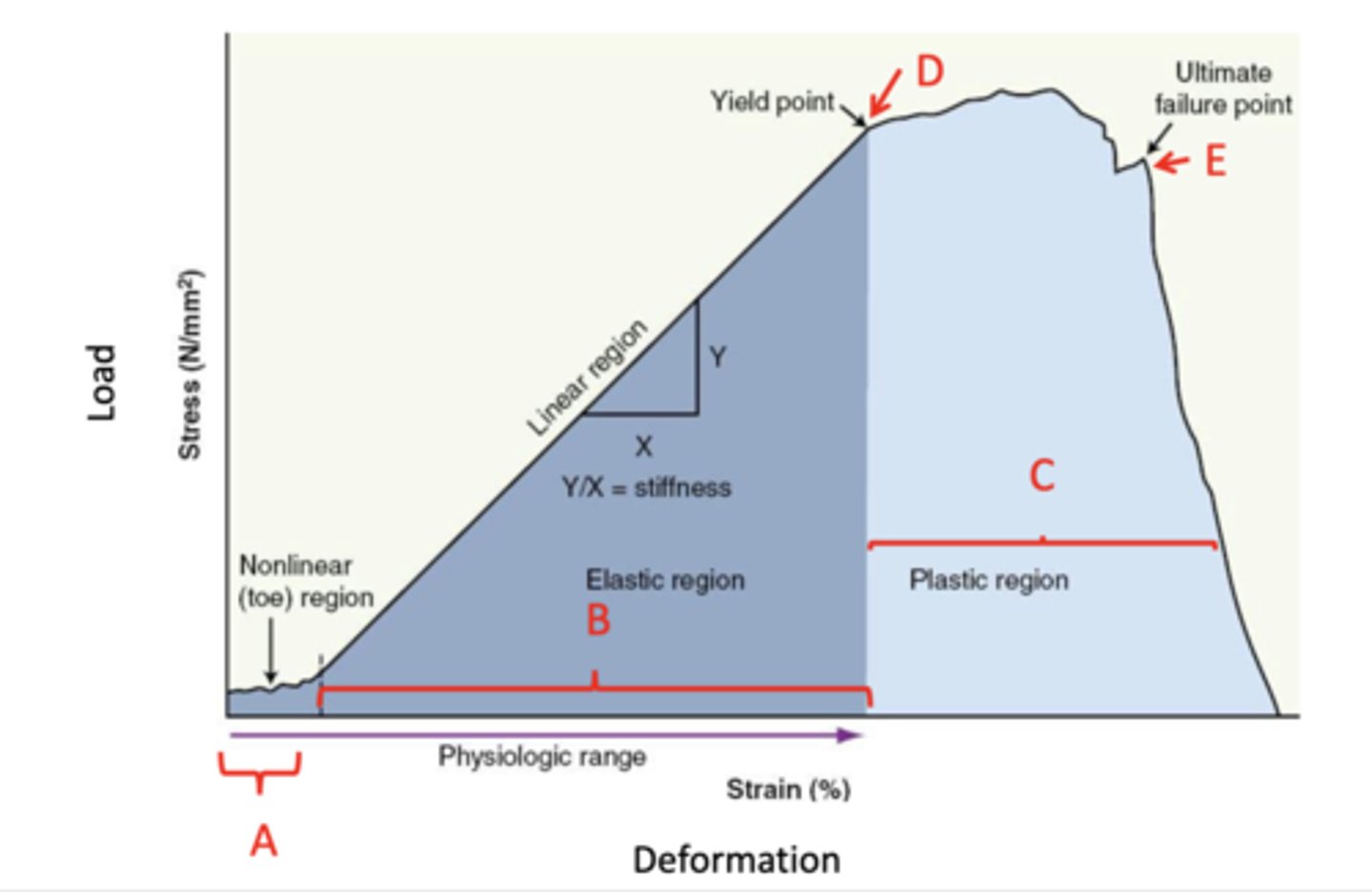
Zone B
Zone B—the elastic zone. Increasing stress and strain are present in a linear relationship. Tissue can return to its original shape when the force is removed.
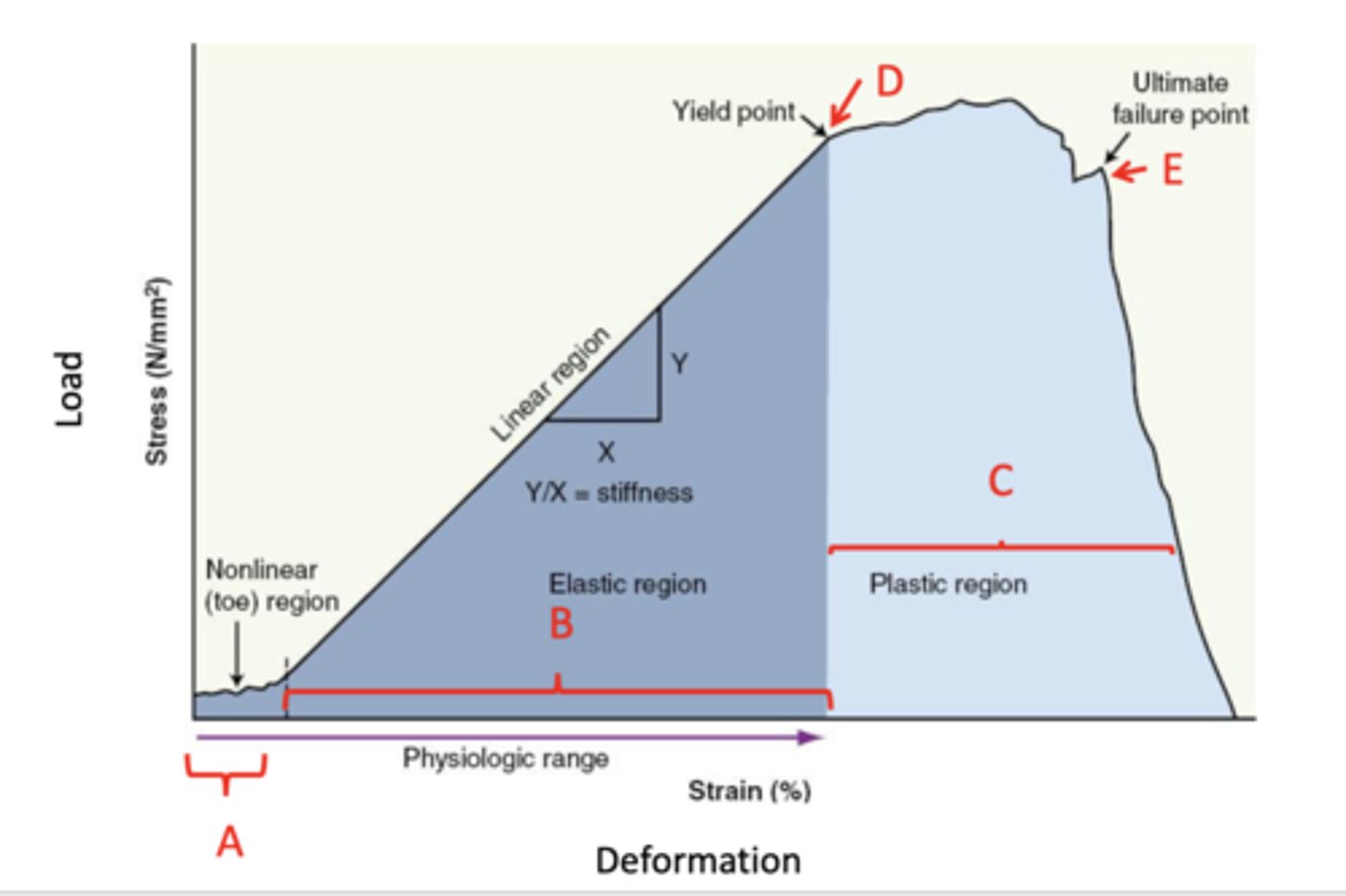
Zone C
Zone C—the plastic zone. The tissue continues to elongate while thereare only slight increases intension. It is at this point there is microscopic tissue failure. The tissuedoes not return to its original shape when the force is removed—it ispermanently deformed
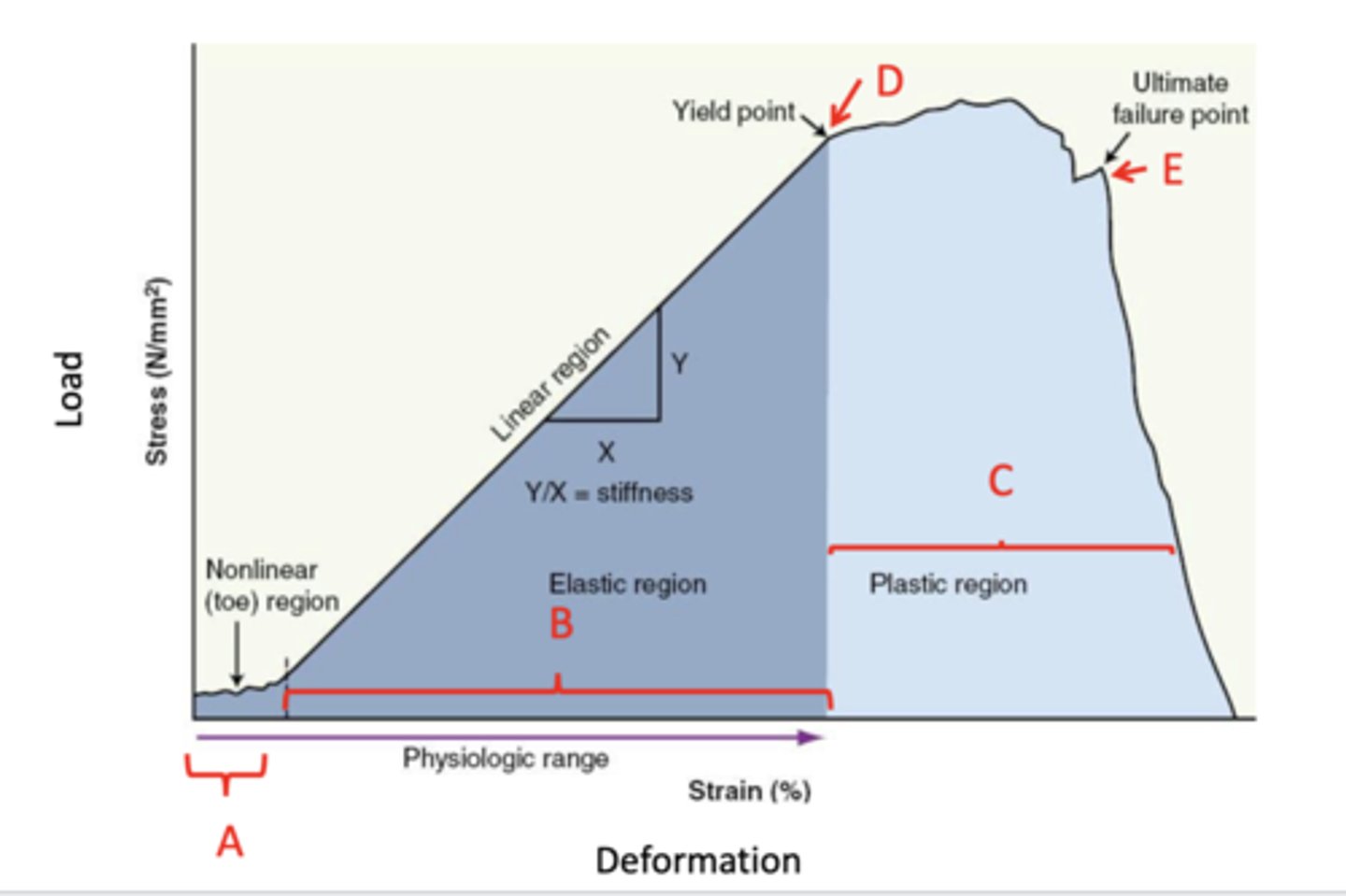
Zone D
Point D—initial point of failure, yield point
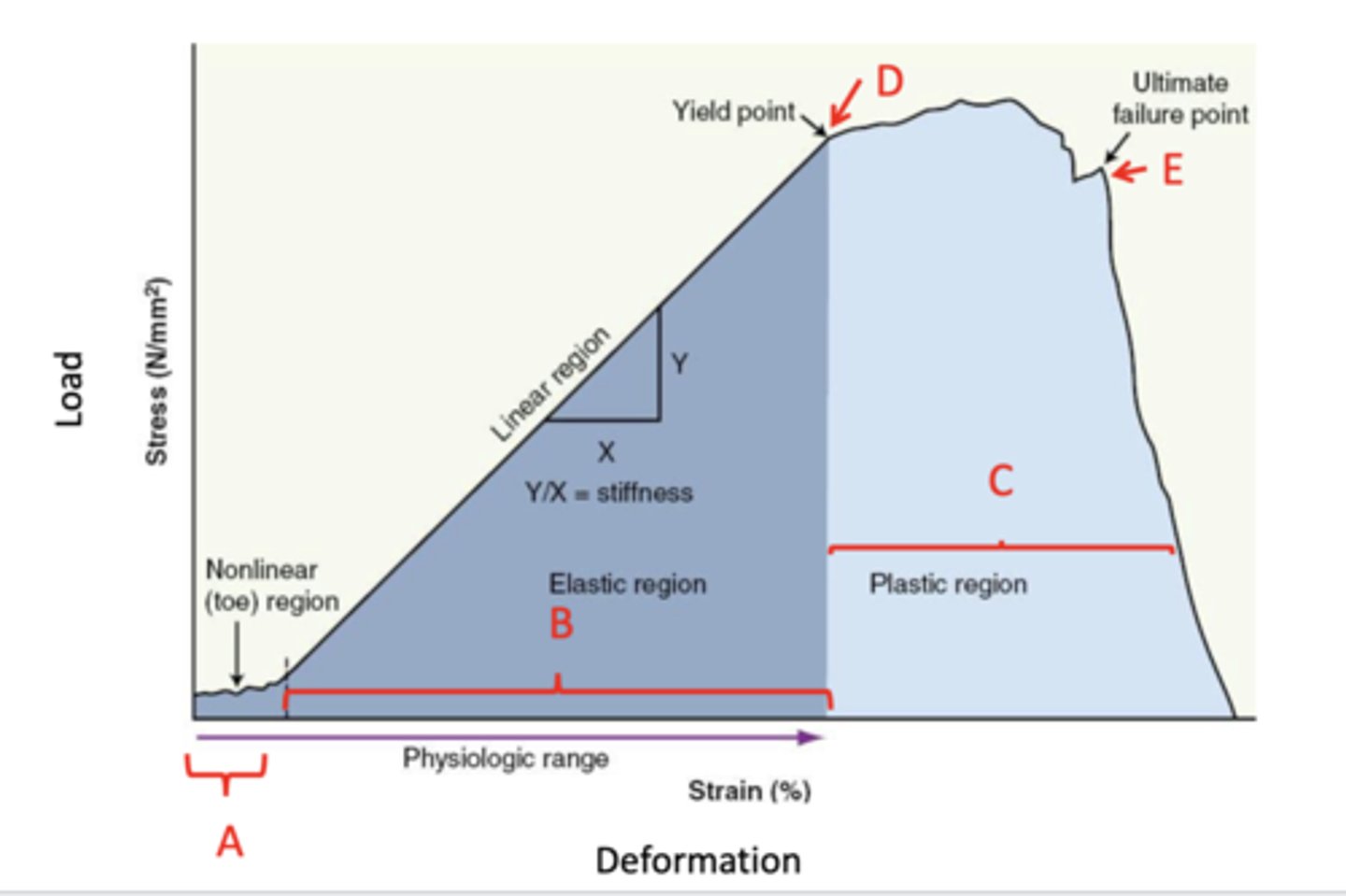
Zone E
Point E—Complete failure

elastic region
should not cause tissue damage
plastic region
may cause tissue damage
Creep
Type of tissue elongation: constant loading
Stress Relaxation
Type of tissue elongation: constant deformation
isometric contraction
same length while contracting
concentric contraction
muscle shortens while contracting
eccentric contraction
muscle lengthens while contracting
Agonist muscles
muscle or muscle group that contracts to cause movement during an isotonic exercise
Antagonist muscles
muscles that oppose or reverse a particular movement
Synergist muscles
assist prime movers during movement
Force couples
when two or more musclessimultaneously produce forces indifferent linear directions, although theresulting torques act in the same rotarydirection
Productive antagonist
model of 2 antagonistic muscleswhich when acting on a specific task provideactive and passive assistance to the task
Plyometric
-Specific muscle contraction where an eccentric contraction is immediately followed by a concentric contraction
-Plyometric contraction can produce greater than concentric, isometric, or eccentric contraction due to• Utilization of elastic energy within the soft tissues• Stretch (myotatic) reflex assistance with concentric contraction
Force (Load) equation
F=ma
Force
Mass
Acceln
Rotation equation
T = I α
T = torque;
I = mass moment of inertia
α = angular acceleration
Newton's first law
An object at rest stays at rest and an object in motion stays in motion with the same speed and in the same direction unless acted upon by an unbalanced force.
Newton's second law
Force = mass x acceleration
Center of mass
the point in an object that moves as if all the object's mass were concentrated at that point
Newtons third law
For every action there is an equal and opposite reaction
Joint Reaction Force
force that exists at a joint, developed in reaction to the net effect of internal and external forces
Torque can also be called ............
moment
External Moment Arm
Steps to determine EMA
1. Determine center of mass/gravity of segment of interest
2. Draw gravitational force acting at center of mass; you may need to extend the line above to help determine moment arm
3. Find the perpendicular between the joint of interest
internal moment arm
perpendicular distance between the axis of rotation and the internal (muscle) force
Posture
Relative arrangement of the parts of the body
Balance Requirement
Requirement - maintain the body's center of gravity within the object's base of support (BoS)
Ideal standing posture center of gravity
Line of gravity falls posterior to the hip and creates external extension moment
Line of gravity falls anterior to the knee and creates external extension moment
Line of gravity falls anterior to the ankle and creates external dorsiflexion moment

First class lever
fulcrum in the middle

second class lever
the axis of rotation is at one end of a system with the load and effort at increasing distances away
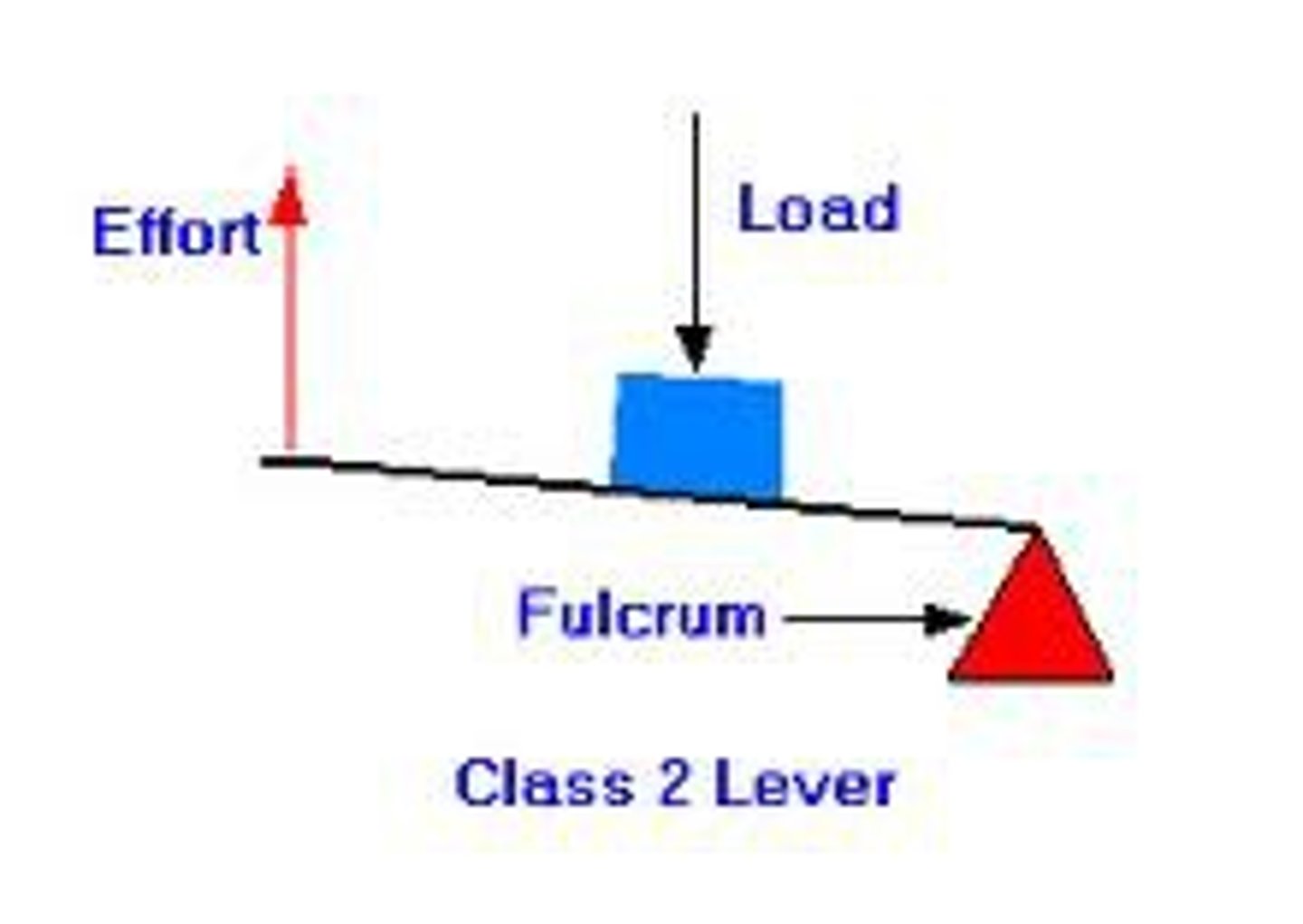
Third Class lever
axis of rotation is at one end of a system with the effortand load at increasing distances away
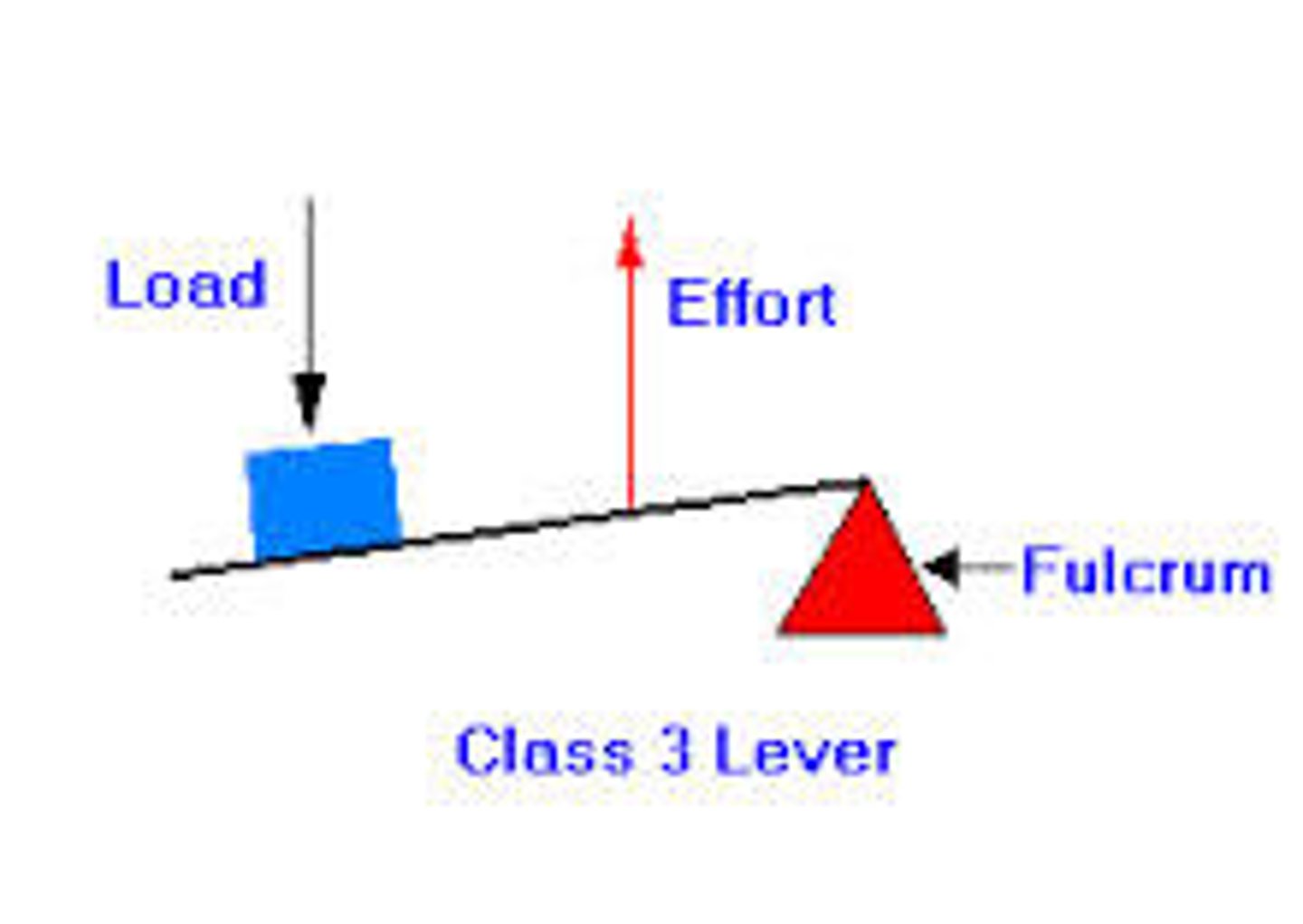
First class lever anatomic example
The axis of rotation is between the muscle force and external load
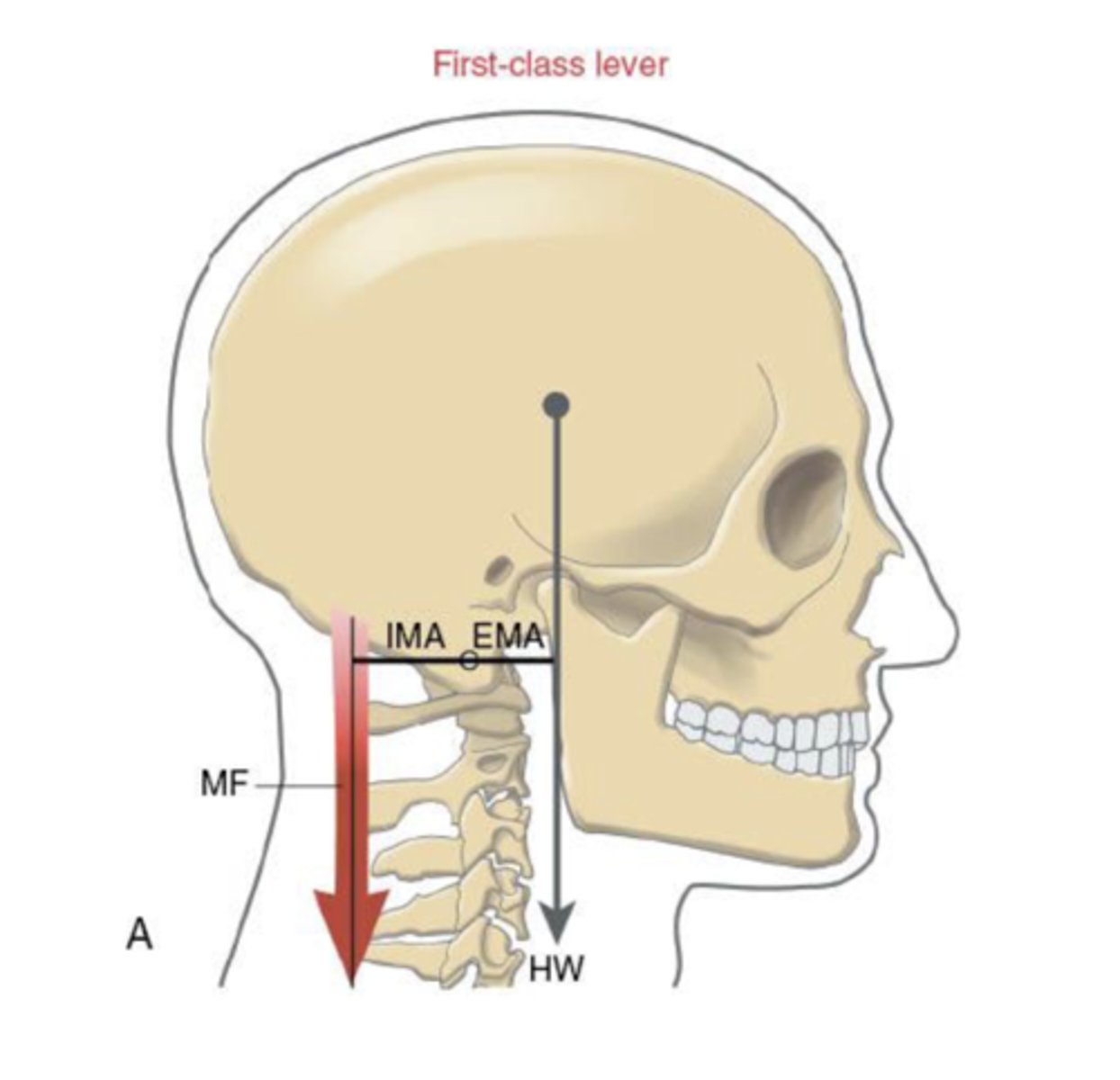
Second class lever anatomic example
The external force, the effect of gravity, on the system is closer to the axis of rotation than the muscle force
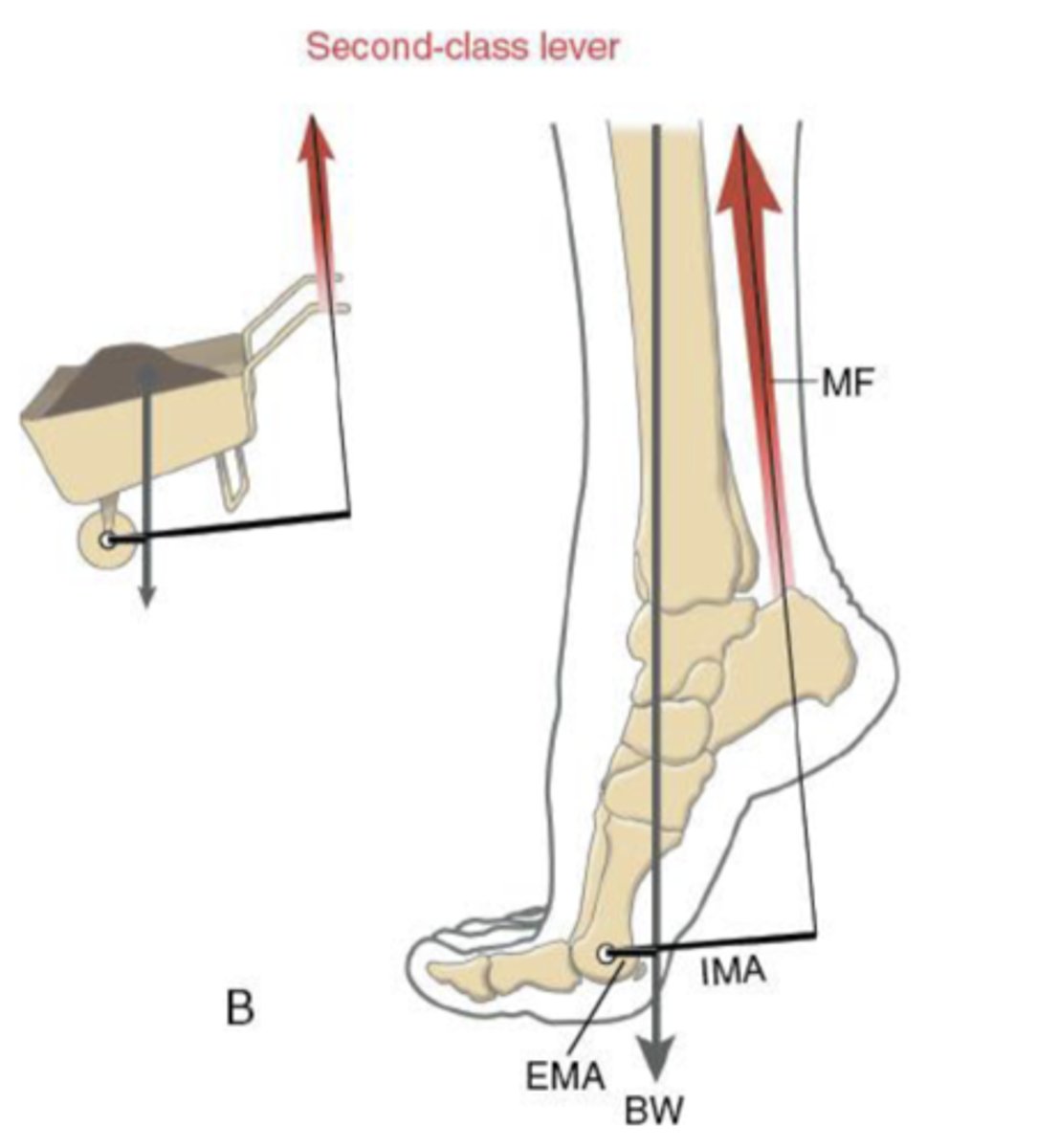
third class lever anatomic example
The muscle force is closer to the axis of rotation than the external force, effect of gravity, on the system
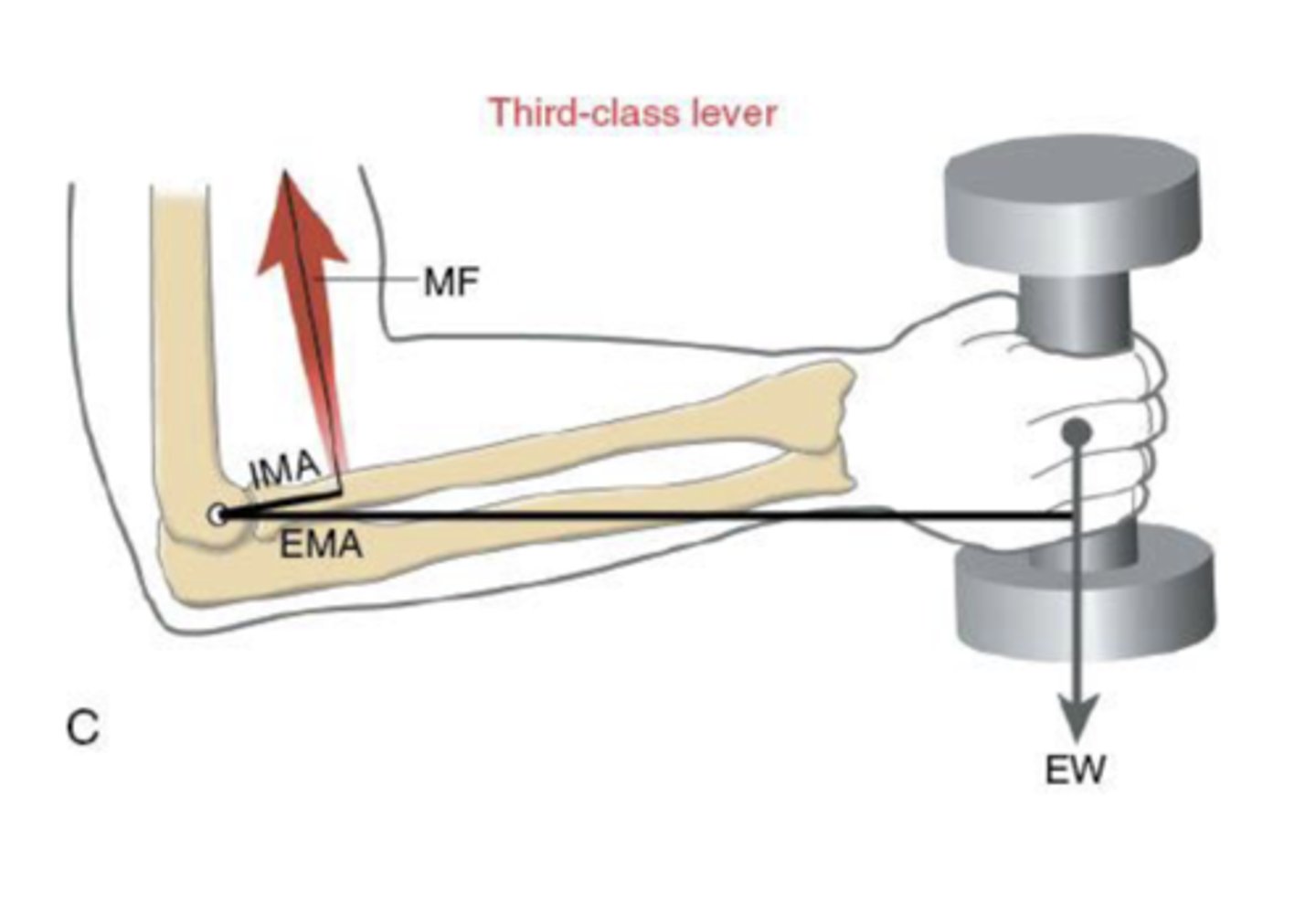
Mechanical Advantage
Mechanical Advantage (MA) of a musculoskeletal lever is the ratio of its internal and external moment arms: IMA/EMA
MA=IMA/EMA
MA > 1 higher force potential
MA < 1 lower force potential

Scalars
quantities that have only a magnitude (do not include direction)
Vector Construction
quantities that have both a magnitude and a direction
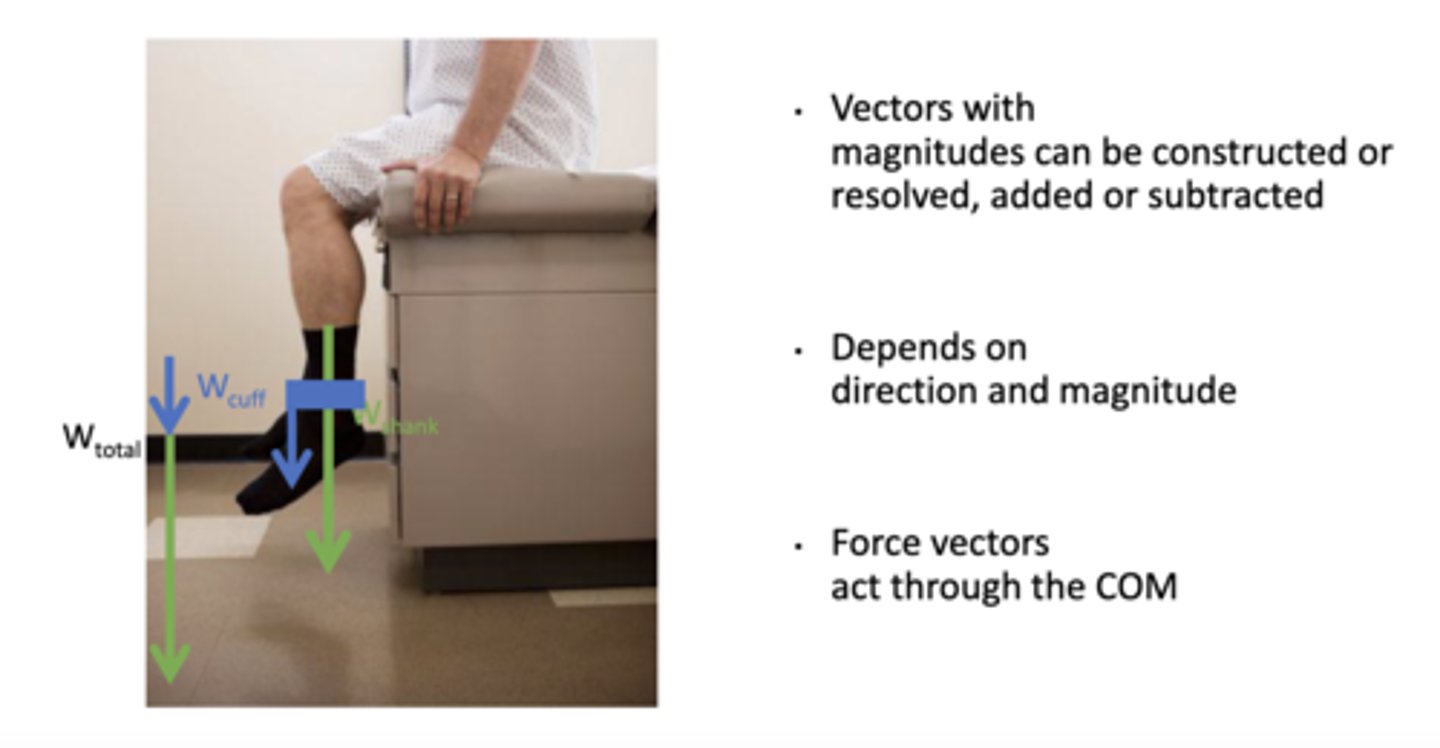
Vector Resolution

vectors
quantities that have both a magnitude and a direction
Anatomical pulleys
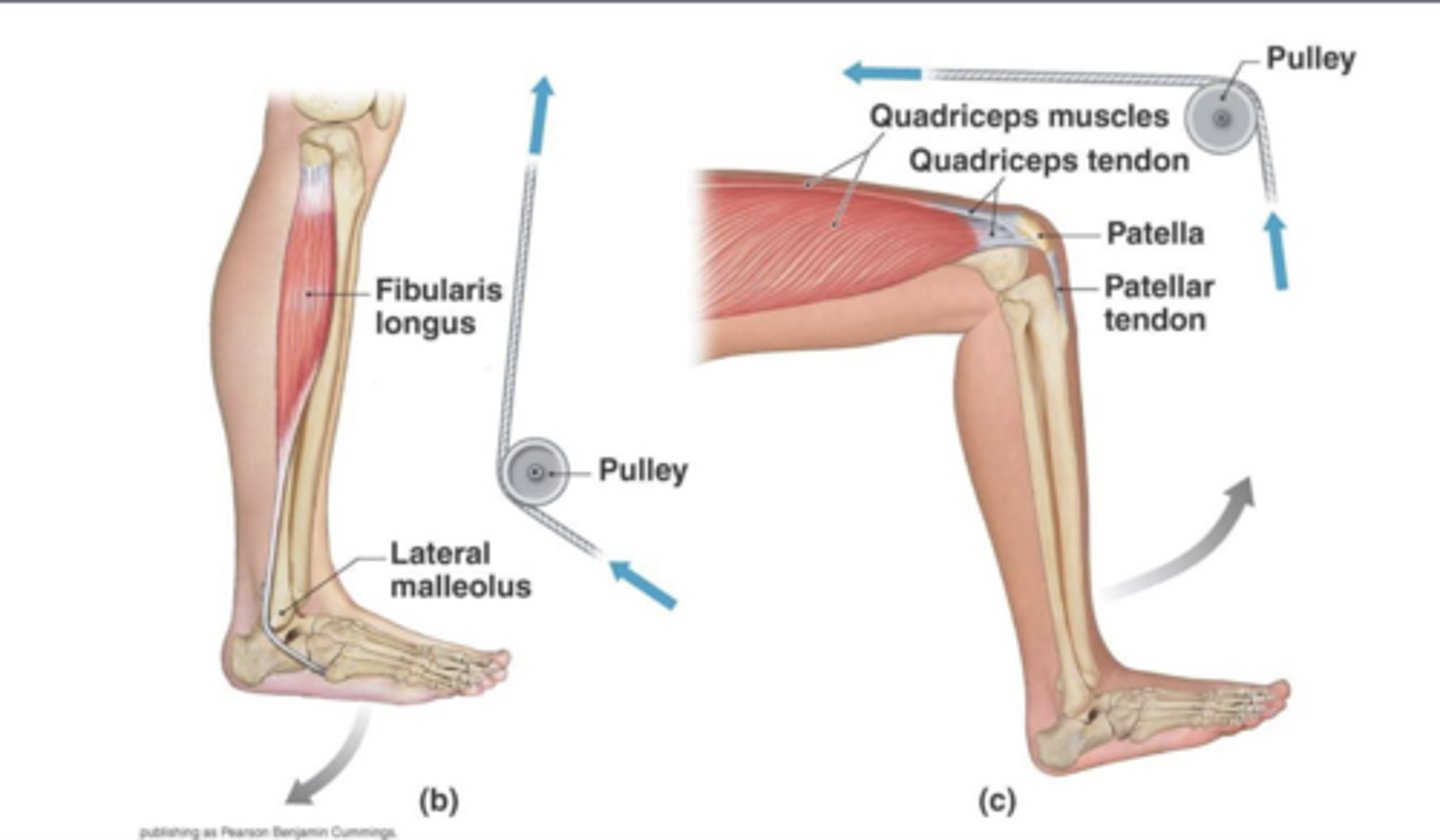
Types of pulleys
fixed
moveable
Equation for internal and external torque
Torque = magnitude of the resultant force x perpendicular moment arm

Diarthrosis Joints (7 characteristics + examples)
-synovial joint, free moving joints
-moderate to extensive movement
1. Synovial fluid 2. Articular cartilage 3. Joint capsule 4. Synovial membrane 5. Ligaments 6. Blood vessels 7. Sensory nerves
Examples:
Knee, Ankle, Shoulder, Apophyseal (facet spine)
Synarthroses Joints characteristics (2 types+examples)
Little to no movement
Fibrous Joints: Stabilized by specialized dense connective tissues, usually with a high concentration of collagen
Ex: Skull Sutures, tibiofibular
Cartilaginous Joints: Stabilized by varying forms of flexible fibrocartilage or hyaline cartilage, often mixed with collagen
Ex: Pubic Symphysis, spinal interbody joint
types of synovial joints
plane, hinge, pivot, condyloid, saddle, ball and socket, ellypsoid

Synovial Joint TypesPrimary Angular Motions

tissue types
epithelial, connective, muscle, nervous
Types of collagen
Type I thick, rugged fibers that elongate little when stretched; comprise ligaments, tendons, fascia, and fibrous joint capsules
Type II thinner than type I fibers; provide a framework for maintaining the general shape and consistency of structures, such as hyaline cartilage
Elastin
Netlike interweaving of small fibrils that resist tensile (stretching) forces but have more "give"when elongated

Ground Substance Glycosaminoglycans (GAGs)
-GAGs are a family of polysaccharides
-Negative charged to repel each other
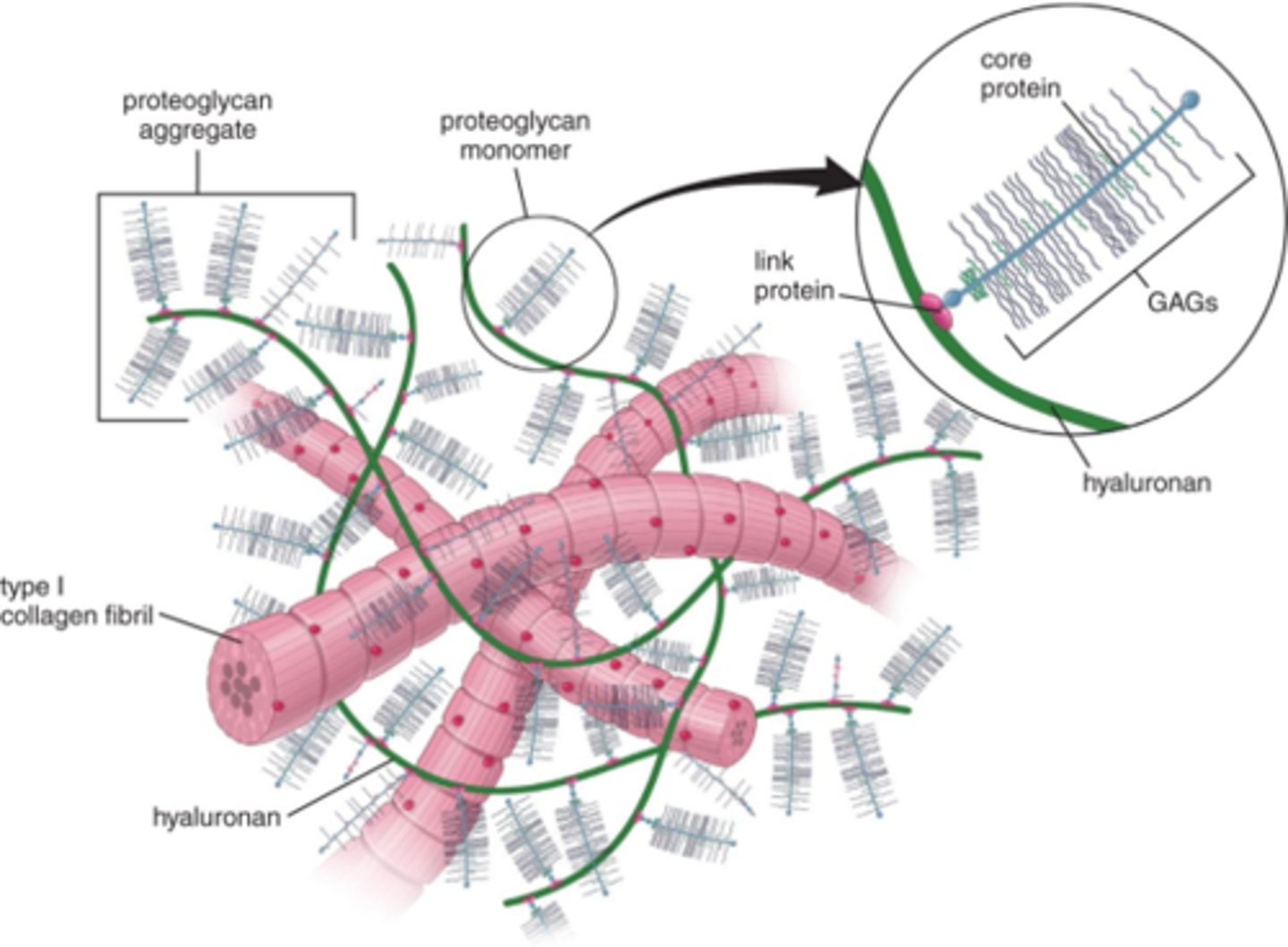
Fibroblasts
Primary cells within ligaments, tendons, andother supportive periarticular connective tissues
Chondrocytes
Primary cells within hyaline articular cartilage and fibrocartilage
dense connective tissue
dense regular (tension), dense irregular (multiple planes), elastic
Most of the non-muscular soft tissues surrounding a joint
a. Fibrous layer of the joint capsule
b. Ligaments
c. Tendons
low healing capacity bc of bloodflow
Dense ConnectiveTissue Remodeling and Repair
Loading tissue - healing
immobilization - decrease load tolerance- weaker
Articular cartilage
hyaline cartilage
decrease compressive load and friction
minimal blood + nerves
Cyclic loading promote tissue health and remodeling
Fibrocartilage
1. Mixture of dense connective tissue and articular cartilage
2. Support and stabilize joints, guide arthrokinematics, dissipate forces
3. Limited vascular and neural supply
4. Combines properties of both dense connective tissue and articular cartilage
a. Intervertebral discs
b. Labrum; shoulder and hip
Compact bone
Hard, dense bone tissue that is beneath the outer membrane of a bone
Cancellous Bone
spongy, porous, bone tissue in the inner part of a bone
Wolff's law of bone
architecture of bone determined by mechanical stresses placed on it and bones adapt to withstand those stresses
Bone healing capabilities
high; rich blood supply
Clinical implications (What forces can be used for tendon, capsules, bone, cartilage)
a. Tendon = tension
b. Capsule = tensions
c. Bone = compression
d. Cartilage = compression
prolonged muscle lengthening
increase sarcomeres, may lead to stretch weakness
prolonged shortening
Decrease in number of sarcomeres secondary to lack of tension
Slower velocity contractions during a concentric contraction allows more time to:
1. remove slack in the muscle
2. increase electrical signaling
3. increase muscle fiber recruitment
Faster velocity contractions during an eccentric contraction take advantage of the:
1. passive elastic properties of the musculotendinous unit and
2. requires less energy, ie, ATP, since less energy require; result of mechanical breakage of actin/myosin cross bridge
Internal Torque (Moment) vs Joint Angle Curve (Picture)
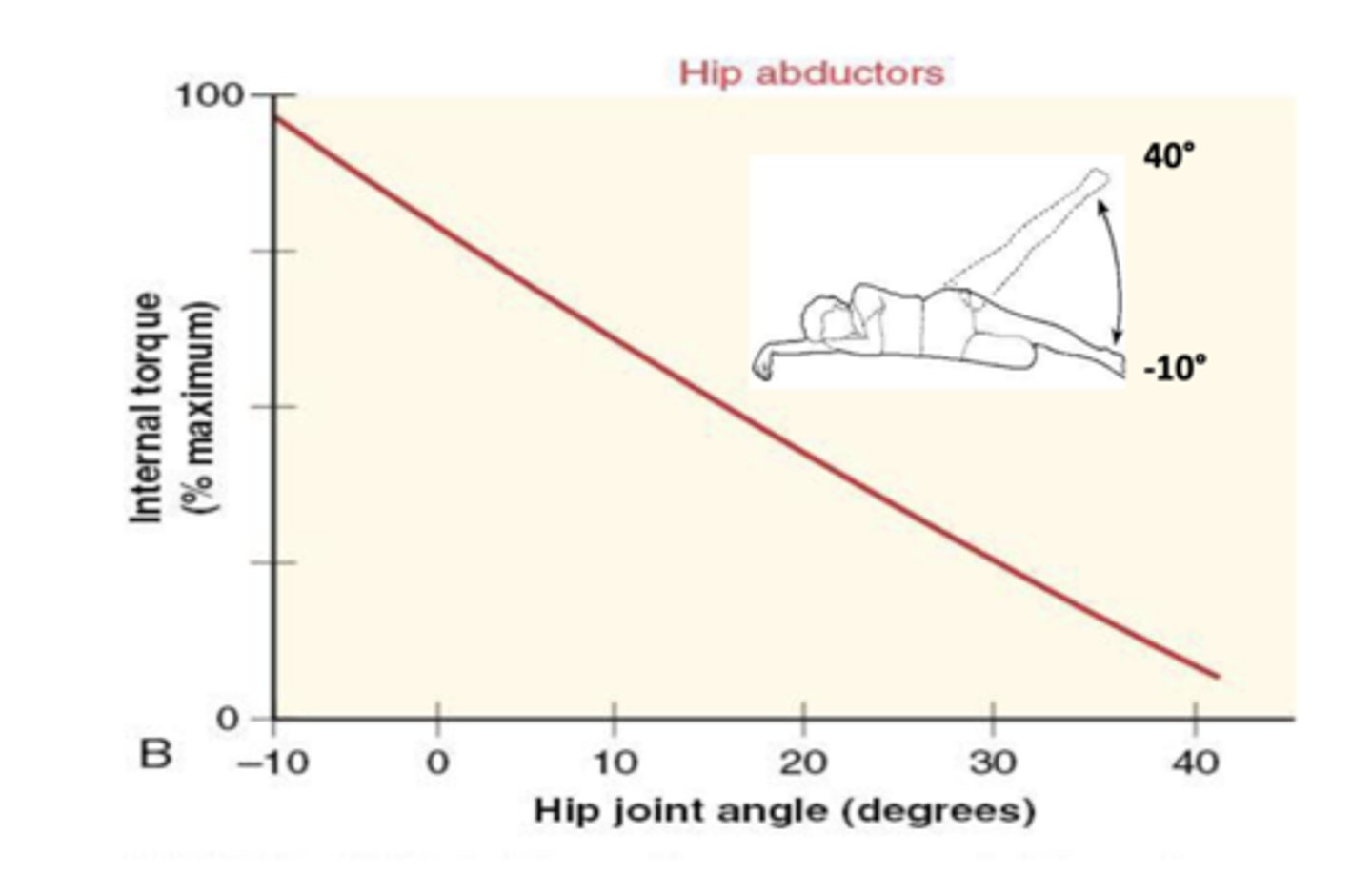
Muscle Force Generation
Muscle force is created as a combination of both active and passive component contributions
Active: contraction
Passive: Stretch of non contractile elements - non contractile proteins, tendons -mysiums
Linear decline in maximum tension vs angle curve
A parabola shaped curve ^
Linear decline: the dominant factor determining the strength of the muscle is the length-tension relationship
Parabola: the moment arm impacts the overall strength of the muscle, typically in midrange
Ex: biceps, quadriceps
Force potential of contractions
Eccentric > isometric > concentric
Concentric: ↑ velocity = ↓ force
Eccentric: ↑ velocity = ↑ force